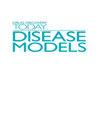Ant microbial symbionts are a new model for drug discovery
Q3 Pharmacology, Toxicology and Pharmaceutics
引用次数: 5
Abstract
Ants have been widely studied, with 14,000 described species, but it is not until recently that they gained attention as sources for antimicrobial drug discovery. An increasing amount of studies are investigating ant-microbe symbioses, and clear benefits from their microbial counterparts have been experimentally demonstrated for ants in the tribes Attini, Camponotini and Cephalotini. The eusocial lifestyle of the insects, feeding on a wide variety of substrates, in some cases requires microbial symbionts to fight parasites. These microbes appear to be more active and less toxic than their traditionally explored soil counterparts, offering hope for our society’s fight against antimicrobial resistance.
蚂蚁微生物共生体是一种新的药物发现模式
蚂蚁已经被广泛研究,有14000种被描述的物种,但直到最近,它们才作为抗菌药物的发现来源而受到关注。越来越多的研究正在调查抗微生物的共生关系,它们的微生物对生物的明显好处已经在实验中被证明适用于蚂蚁部落Attini, Camponotini和cephalalotini。昆虫的群居生活方式,以各种各样的基质为食,在某些情况下需要微生物共生体来对抗寄生虫。这些微生物似乎比传统上探索的土壤微生物更活跃,毒性更小,为我们社会与抗菌素耐药性的斗争带来了希望。
本文章由计算机程序翻译,如有差异,请以英文原文为准。
求助全文
约1分钟内获得全文
求助全文
来源期刊

Drug Discovery Today: Disease Models
Pharmacology, Toxicology and Pharmaceutics-Drug Discovery
自引率
0.00%
发文量
0
期刊介绍:
Drug Discovery Today: Disease Models discusses the non-human experimental models through which inference is drawn regarding the molecular aetiology and pathogenesis of human disease. It provides critical analysis and evaluation of which models can genuinely inform the research community about the direct process of human disease, those which may have value in basic toxicology, and those which are simply designed for effective expression and raw characterisation.
 求助内容:
求助内容: 应助结果提醒方式:
应助结果提醒方式:


